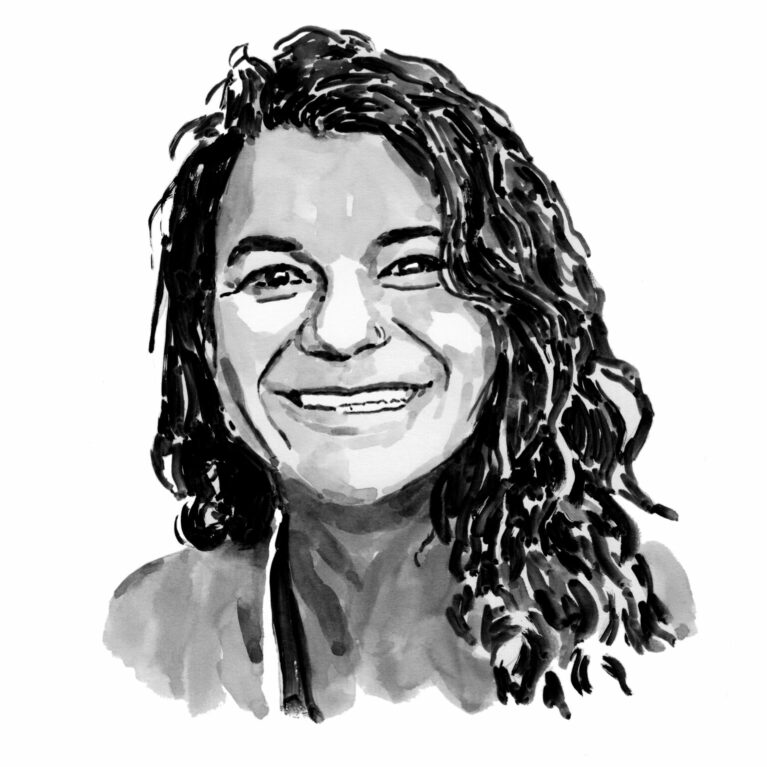Addie Binstock

Who I am
I am a Master’s candidate in marine science, an open-water scuba instructor and an elasmobranch enthusiast. After graduating with a BSc in animal science and wildlife biology from a land-locked state in the USA, I knew I wanted to get back to the water and get my career on track for using my generalised education to address marine conservation issues. With this in mind, I began travelling and working for different conservation non-profit organisations worldwide, combining my water skills in boat handling and scuba diving with my passion for research and science. This is where my captivation with elasmobranchs began, as each job I landed seemed to specialise more and more in sharks and rays. I travelled the world for five years working on different elasmobranch conservation projects, from managing scuba research operations at an Indonesian biological field station studying manta rays to working for the Australian government tagging white, mako and tiger sharks. After years of developing myself professionally, I decided to return to school to get my academic experience up to speed with my field work experience. While completing the work for my Master’s thesis, I have had the honour and pleasure of working on research that has real-world implications for improving the management of sensitive and overexploited elasmobranchs. My goals following the completion of my degree are to continue this work by marrying my field experience with my academic credibility to take the lead in field-based research projects. It is my lifelong commitment to be in and around the water with these sensitive species to promote their protection and appreciation by the general public.
Where I work
I currently work at the University of New England in the Shark and Fish Ecology lab. The main focus of this lab is to explore the natural chemical tracers in accretionary structures (‘hard parts’), such as otoliths in fish or vertebrae in sharks, to advance our understanding of life-history characteristics. Many of the projects we undertake, including this one, incorporate new technology to apply novel methods to classic analysis techniques. This allows our lab to be at the forefront of cutting-edge research methods and to develop protocols that can be used by other investigators in future studies. Our in-house laboratory capabilities and relationships with outside labs allow our work to be collaborative and progressive, and at the same time we are perfectly situated at the edge of the ocean so we don’t have to travel far to conduct our field work. Although we reside in Maine, where field work can be done for only six months of the year, we take every opportunity to go offshore to collect data on the sharks we have in our own backyard. In this way, each member of the lab graduates with the tools necessary to run field work operations and laboratory processes, so they can advance elasmobranch research from either front.
What I do
This project is based mainly in the laboratory, but that doesn’t mean there’s no excitement in the process of sampling blacktip vertebrae and muscle. When we receive coolers full of elasmobranch vertebral columns from the Gulf of Mexico, it feels like Christmas morning. We then dissect the muscle tissue and vertebrae to remove one individual centrum, which is cross-sectioned using a low-speed saw and mounted on a microscope slide. Under the microscope, we are able to identify aspects of the vertebra that correlate to different times of an individual’s life. We then use a high-performance micro-mill, which utilises tiny dental drill bits to target specific areas of the vertebra that contain the information relating to time of capture and just after birth. By plotting the trajectory of the drill with the computer across the vertebra under the microscope, tiny sections can be removed and packaged for stable isotope analysis. Once each of the two temporal spans and the muscle tissue have been packaged for each individual, the process of stable isotope analysis is undertaken at a different laboratory. By collaborating with different laboratories and researchers, I have gained many new skills from this project and expanded my knowledge and areas of expertise outside our lab here at the university. Once the data come back from the isotope lab (another mini-Christmas), we proceed with data analysis and get the answers to our burning questions about stock delineation and variability in the life-history characteristics of the Gulf of Mexico’s blacktip sharks.
